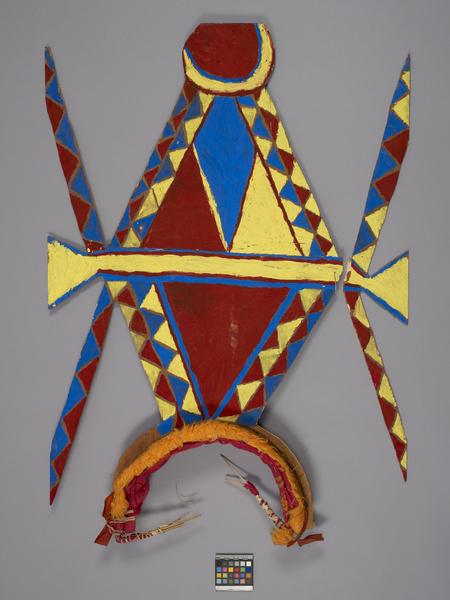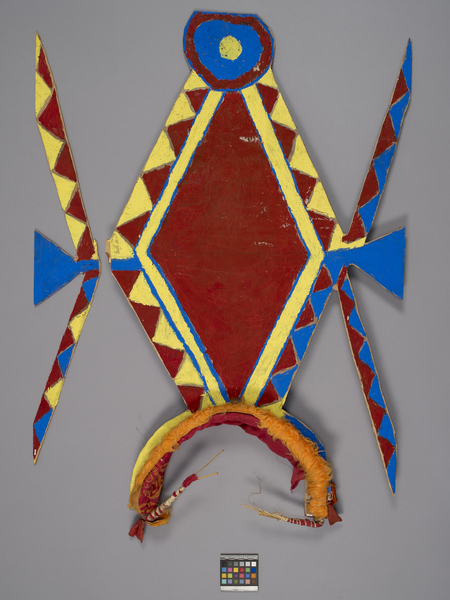Headdress Item Number: 3168/1 a-b from the MOA: University of British Columbia


Description
Geru board, or headdress. Made of thin plywood in a large diamond shape at centre, with a partial circle at top, and to the sides two ‘arms’ branching off at angles both upwards and down, separated by a small triangle. The board is painted red, blue and yellow mainly in triangle and diamond shapes, with front similar but more complex than back. At bottom is a headpiece lined with red cotton fabric, and topped by a synthetic orange material. Two wooden handles are attached to the bottom of the headpiece and wrapped with plant fibre. Part b is a plywood piece that has broken off one side of the headdress.
History Of Use
Contemporary copy of a geru board, traditionally worn by young men in initiation ceremonies in the New Guinea highlands.
Narrative
Made from non-traditional materials in Keri Village in 1989, by a young man named Andrew (for the donor). The maker wanted to illustrate for Peach what a male initiation headdress had looked like. The practice had been abolished only recently at that time, by Christian missionaries. Peach purchased the wood and paint in Kundiawa and he constructed it from memory and presented it to her.
Item History
- Made in Chimbu, Papua New Guinea during 1989
- Collected during 1989
- Owned by Patricia Peach before May 3, 2016
- Received from Patricia Peach (Donor) on May 3, 2016
What
- Name
- Headdress
- Identification Number
- 3168/1 a-b
- Type of Item
- headdress
- Material
- wood, cotton fibre, synthetic fibre, paint and plant fibre
- Part A
- height 112.0 cm, width 63.0 cm, depth 9.7 cm
- Part B
- height 93.0 cm, width 14.5 cm, depth 1.0 cm
Who
- Culture
- Keri
- Previous Owner
- Patricia Peach
- Received from
- Patricia Peach (Donor)
Where
- Holding Institution
- MOA: University of British Columbia
- Made in
- Chimbu, Papua New Guinea
When
- Creation Date
- during 1989
- Collection Date
- during 1989
- Ownership Date
- before May 3, 2016
- Acquisition Date
- on May 3, 2016
Other
- Condition
- fair
- Accession Number
- 3168/0001 a-b